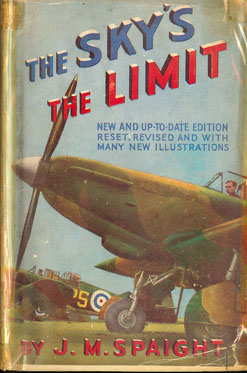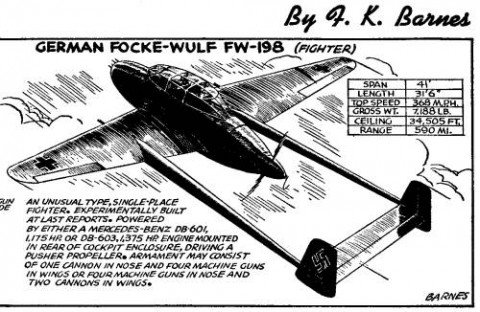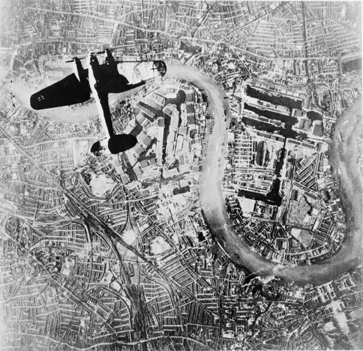Since I shamefully forgot to blog Battle of Britain Day last year, I made sure not to repeat this mistake this year. I’m marking the occasion by re-watching the classic 1969 film Battle of Britain, directed by Guy Hamilton. I must confess that I love this film. It’s not just because of the fantastic aerial action sequences, featuring several dozen real Spitfires, Hurricanes, Me 109s and He 111s.1 Well, it’s mainly because of that (and the music, oh yes, the music — Ron Goodwin’s stirring and bombastic theme as well as the William Walton piece in the dreamlike “duel in the sky” sequence [edit: actually called “Battle in the air”]) but it’s also because it manages to encapsulate just about every theme, anecdote, stereotype and myth about the Battle going. ‘Call me Meyer’? Check. The Big Wing debate? Check. ‘Yellow-nosed bastards’? Check. WAAFs and their plotting tables? Check. Home Guards armed with pitch-forks? Check. Galland asking Goering for a squadron of Spitfires? Check. Over-enthusiastic and unintelligible Poles engaging the enemy against orders? Check. Civilians huddled in Tube stations? Check. ‘Achtung! Spitfire!’ Check. Fresh-faced young pilots rushed into action and to their deaths after only a few hours’ training? Check. I could go on and on, and in fact I will! The invasion barges assembling in France? Check. The close escort order? Check. The importance of radar? Check. The turn on London? Check. RAF fighter pilots unbuttoning their top button? Check. OK, I’ll stop now! But my point is that Battle of Britain is your one-stop shop for reaffirming the myth of 1940, and is, to me, all the more enjoyable for it. And as such, the film is probably partly responsible for the heated reaction last month to the claim that it was the Royal Navy which ‘saved’ Britain in 1940, not the RAF (Blog Them Out of the Stone Age had a good post on the matter).
I don’t see why it has to be an either/or situation. The RAF was the first line of defence, the Navy was the second (and the Army, the third). Massively inferior as they were at sea, the Germans had absolutely no chance whatsoever, unless they had air superiority. Even then, of course, it would have been decidedly dicey and perhaps impossible. However, it never came to that, because the RAF did their job (and not just Fighter Command, but Bomber Command and Coastal Command too, in attacking the invasion ports and airfields, at great cost). But the Navy’s strength was essential to Britain’s victory. It was why Germany was forced to fight Britain in the air in the first place — without the Navy, maybe Germany could have chanced an invasion against the battered Army.
Rather than the inter-service rivalry question, I think that the persistence of the myth of ‘The Few’ is more interesting, and more telling. In Battle of Britain, Dowding (Laurence Olivier) says something to the effect that his men needed a 4:1 kill ratio just to keep even, ie to shoot down four German aircraft for every British one lost. (Actually, he elides aircraft and aircrew, but it’s clear the former was meant.) But as Stephen Bungay argues in The Most Dangerous Enemy: A History of the Battle of Britain (London: Aurum Press, 2000), once production, reserves, and training are taken into account, it was the other way around. The Luftwaffe had sustained heavy losses in the spring of 1940, which was very bad seeing as it had been built to maximise front-line strength, to the neglect of reserves. And despite having an apparently huge superiority in numbers, the key comparison was in numbers of fighters, and single-seat fighters at that, where the Luftwaffe only had a slight edge. Every German aircraft shot down over Britain meant a permanent loss of aircrew (with the exception of one who got away), whereas British pilots who were shot down were often soon back at their squadrons. In addition, despite all the predictions in the pre-war literature about the Germans carefully drawing their plans about when and where to strike Britain for maximum damage, the Luftwaffe’s target plan was abysmal. Intelligence was either poor or ignored, key targets were neglected in favour of unimportant ones, and the nature of Dowding’s command and control organisation was not understood, despite its descent (with modifications) from the system which they’d come up against in the First World War. The question is less, could Germany have won the Battle of Britain? and more, could Britain have lost it? And furthermore, why has this been forgotten? Why not take pride in Fighter Command’s thorough and professional preparation for the defence of Britain, rather treating it as an heroic fight against the odds? My pat answer is that it’s probably because the former smacks of German militarism, while the latter suits the English amateur sporting ideal. But I’m sure there are other possible explanations.
PS I forgot to include some links about the film. There are disappointingly few. The usual: Wikipedia and IMDB. A couple of pages about the filming, here and here (that one shows that model Me 110s were constructed for the film, but they don’t appear in the film, as far as I know). Finally, one has to wonder if Susannah York’s character had time-traveled to 1940 from 1969, judging by her hairstyle …
PPS I also forgot to mention this claim that it wasn’t the RAF who won the Battle of Britain, or even the RN, but the Dutch! You may ask how that is possible, since they were only in the war for 5 days. The answer to this is that the Dutch destroyed many aircraft which were supposedly due to be used for an airborne landing in Britain later that month. Yes, apparently Germany was so confident of knocking off France that they were planning to simultaneously launch the biggest overseas invasion in history. As can be seen, I wasn’t persuaded, but perhaps I am too unimaginative.
![]() This work is licensed under a Creative Commons Attribution-NonCommercial-NoDerivatives 4.0 International License.
Permissions beyond the scope of this license may be available at http://airminded.org/copyright/.
This work is licensed under a Creative Commons Attribution-NonCommercial-NoDerivatives 4.0 International License.
Permissions beyond the scope of this license may be available at http://airminded.org/copyright/.
- Supposedly, together they composed the 35th largest air force at the time. If so, then since it was flying unarmed piston engined aircraft, it was an air force that even New Zealand could have beaten. [↩]




Pingback: Old is the New New :: History Carnival XL
Going back to the model Messerscmitt Bf-110s in the Battle of Britain film the truth is somewhat more prosaic. They were built in the first period the film had the go-ahead, but when it stalled, they were canned, and only the other models were chosen with the revised script, which required models only to back up full size real examples. The lack of Ju-88 and Do-17 (and Defiants and Blenheims) is explained this way – as well as keeping it simple for the audience.
The odd one out ~ that everyone is about to point out ~ is of course the Ju-87 Stukas – they were meant to shadow the RAF Museum’s Stuka which, some accounts state, was actually got running, but electrical problems brought that to a halt. That’s why the Stukas in the film are Ju-87D/G versions, not Berthas which they should have been.
Several Percival Proctors were rebuilt into sort of Stukas as well, know as ‘Proctukas’ but they weren’t very convincing looking, and scared Viv Bellamy when he flew them, and they couldn’t dive, so that al came to a halt too.
My friend the late Robert Rudhall produced two books on the film – both now fetching good prices secondhand. Another friend of mine, Gary Brown, researched and wrote a couple of articles on the film, including interviewing the chief model maker, from which I’m sort of remembering. I can check the facts if anyone’s fussed.
Incidentally Peter Arnold, the surviving-Spitfires expert just stated of one of the two-seat Spitfires of the film: ‘the price for a flying Spitfire then…£12.5k that is about $23,000 USD’. It was only really by about 1995 that the majority of world’s population of flying Spitfires and Hurricanes didn’t have the film on their CV – pior to then they were mostly ex-film ‘stars’; afterwards further new rebuilds have outnumbered them.
Cheers
As to the viability of Operation Sealion, it is difficult to get passed Peter Fleming’s book of the same name. As he was there at the time, was intended to lead the ‘left behind’ resistance, and was a professional army officer and writer, as well as informed of the Sandhurst war game on the topic, his views and conclusions are worth seeking out.
Yes, brother of Ian.
Thanks, JDK. I didn’t know about the Proctuka! There’s a photo here — it’s almost, but not quite, entirely unlike a real Stuka.
I’ve got Fleming’s book. It looks very interesting but sadly I haven’t read it yet …
Pingback: Acquisitions | Airminded